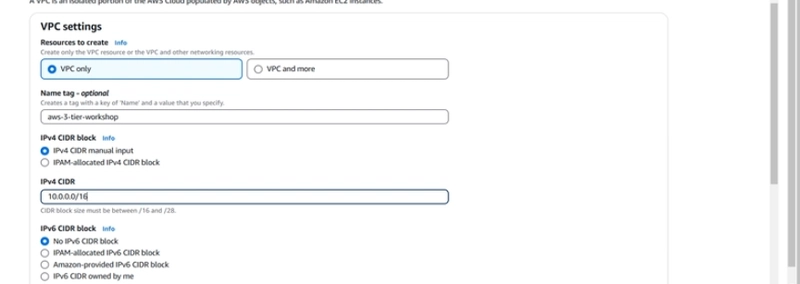Scaling Applications with Load Balancers and Reverse Proxies
Introduction: The Challenge of Scaling Applications Imagine you have a booming e-commerce website. During normal days, your application performs smoothly, but as Black Friday approaches, your traffic surges exponentially. Suddenly, your server crashes due to the overwhelming load. Customers leave frustrated, and you lose revenue. This is where Load Balancers and Reverse Proxies come to the rescue! These two technologies help distribute traffic efficiently, ensuring high availability, security, and optimal performance. In this guide, we will explore how to use them effectively in DevOps, with hands-on examples and best practices. What Are Load Balancers and Reverse Proxies? Load Balancer A Load Balancer acts as a traffic distributor, spreading incoming requests across multiple servers to prevent overload and ensure smooth operations. Reverse Proxy A Reverse Proxy sits in front of your servers, handling client requests, caching content, and improving security by hiding backend infrastructure. Feature Load Balancer Reverse Proxy Distributes Traffic ✅ ❌ Caches Content ❌ ✅ Improves Security ✅ ✅ SSL Termination ✅ ✅ Hides Backend Servers ❌ ✅ Comparison Table: Load Balancers vs. Reverse Proxies Feature Load Balancer Reverse Proxy Purpose Distributes traffic across servers Acts as an intermediary for requests Performance Improves application responsiveness Can cache responses for faster access Security Basic security features Enhanced security and SSL termination Use Case High traffic websites API gateways and microservices Step-by-Step Guide: Configuring Load Balancers and Reverse Proxies Setting Up an Nginx Reverse Proxy Install Nginx: sudo apt update && sudo apt install nginx -y Configure Reverse Proxy: sudo nano /etc/nginx/sites-available/default Add the following configuration: server { listen 80; server_name example.com; location / { proxy_pass http://127.0.0.1:5000; proxy_set_header Host $host; proxy_set_header X-Real-IP $remote_addr; proxy_set_header X-Forwarded-For $proxy_add_x_forwarded_for; } } Restart Nginx: sudo systemctl restart nginx Setting Up a Load Balancer with HAProxy Install HAProxy: sudo apt update && sudo apt install haproxy -y Configure HAProxy: sudo nano /etc/haproxy/haproxy.cfg Add the following configuration: frontend http_front bind *:80 default_backend web_servers backend web_servers balance roundrobin server server1 192.168.1.101:80 check server server2 192.168.1.102:80 check Restart HAProxy: sudo systemctl restart haproxy Real-World Use Cases How Netflix Scales with Load Balancers Netflix uses Amazon Elastic Load Balancing (ELB) to distribute billions of requests daily, ensuring seamless streaming. They combine ELB with Nginx reverse proxies to optimize caching and reduce latency. Comparing Load Balancers: HAProxy vs Nginx vs AWS ELB Feature HAProxy Nginx AWS ELB Open Source ✅ ✅ ❌ SSL Termination ✅ ✅ ✅ Built-in Caching ❌ ✅ ❌ Cloud-Native ❌ ❌ ✅ Interactive Learning Watch this video: Scaling Applications with Load Balancers Try a quiz: What Load Balancer Should You Use? Join the discussion: Comment below with your experiences! SEO Optimization & Call-to-Action Summary By using Load Balancers and Reverse Proxies, you can: ✅ Improve application uptime ✅ Optimize performance ✅ Enhance security

Introduction: The Challenge of Scaling Applications
Imagine you have a booming e-commerce website. During normal days, your application performs smoothly, but as Black Friday approaches, your traffic surges exponentially. Suddenly, your server crashes due to the overwhelming load. Customers leave frustrated, and you lose revenue.
This is where Load Balancers and Reverse Proxies come to the rescue! These two technologies help distribute traffic efficiently, ensuring high availability, security, and optimal performance. In this guide, we will explore how to use them effectively in DevOps, with hands-on examples and best practices.
What Are Load Balancers and Reverse Proxies?
Load Balancer
A Load Balancer acts as a traffic distributor, spreading incoming requests across multiple servers to prevent overload and ensure smooth operations.
Reverse Proxy
A Reverse Proxy sits in front of your servers, handling client requests, caching content, and improving security by hiding backend infrastructure.
| Feature | Load Balancer | Reverse Proxy |
|---|---|---|
| Distributes Traffic | ✅ | ❌ |
| Caches Content | ❌ | ✅ |
| Improves Security | ✅ | ✅ |
| SSL Termination | ✅ | ✅ |
| Hides Backend Servers | ❌ | ✅ |
Comparison Table: Load Balancers vs. Reverse Proxies
| Feature | Load Balancer | Reverse Proxy |
|---|---|---|
| Purpose | Distributes traffic across servers | Acts as an intermediary for requests |
| Performance | Improves application responsiveness | Can cache responses for faster access |
| Security | Basic security features | Enhanced security and SSL termination |
| Use Case | High traffic websites | API gateways and microservices |
Step-by-Step Guide: Configuring Load Balancers and Reverse Proxies
Setting Up an Nginx Reverse Proxy
- Install Nginx:
sudo apt update && sudo apt install nginx -y
- Configure Reverse Proxy:
sudo nano /etc/nginx/sites-available/default
Add the following configuration:
server {
listen 80;
server_name example.com;
location / {
proxy_pass http://127.0.0.1:5000;
proxy_set_header Host $host;
proxy_set_header X-Real-IP $remote_addr;
proxy_set_header X-Forwarded-For $proxy_add_x_forwarded_for;
}
}
- Restart Nginx:
sudo systemctl restart nginx
Setting Up a Load Balancer with HAProxy
- Install HAProxy:
sudo apt update && sudo apt install haproxy -y
- Configure HAProxy:
sudo nano /etc/haproxy/haproxy.cfg
Add the following configuration:
frontend http_front
bind *:80
default_backend web_servers
backend web_servers
balance roundrobin
server server1 192.168.1.101:80 check
server server2 192.168.1.102:80 check
- Restart HAProxy:
sudo systemctl restart haproxy
Real-World Use Cases
How Netflix Scales with Load Balancers
Netflix uses Amazon Elastic Load Balancing (ELB) to distribute billions of requests daily, ensuring seamless streaming. They combine ELB with Nginx reverse proxies to optimize caching and reduce latency.
Comparing Load Balancers: HAProxy vs Nginx vs AWS ELB
| Feature | HAProxy | Nginx | AWS ELB |
|---|---|---|---|
| Open Source | ✅ | ✅ | ❌ |
| SSL Termination | ✅ | ✅ | ✅ |
| Built-in Caching | ❌ | ✅ | ❌ |
| Cloud-Native | ❌ | ❌ | ✅ |
Interactive Learning
- Watch this video: Scaling Applications with Load Balancers
- Try a quiz: What Load Balancer Should You Use?
- Join the discussion: Comment below with your experiences!
SEO Optimization & Call-to-Action
Summary
By using Load Balancers and Reverse Proxies, you can:
✅ Improve application uptime
✅ Optimize performance
✅ Enhance security










































































































































































![[The AI Show Episode 143]: ChatGPT Revenue Surge, New AGI Timelines, Amazon’s AI Agent, Claude for Education, Model Context Protocol & LLMs Pass the Turing Test](https://www.marketingaiinstitute.com/hubfs/ep%20143%20cover.png)



































































































































![From drop-out to software architect with Jason Lengstorf [Podcast #167]](https://cdn.hashnode.com/res/hashnode/image/upload/v1743796461357/f3d19cd7-e6f5-4d7c-8bfc-eb974bc8da68.png?#)












































































































-11.11.2024-4-49-screenshot.png?width=1920&height=1920&fit=bounds&quality=70&format=jpg&auto=webp#)























_jvphoto_Alamy.jpg?#)




.png?#)







































































































![Apple Debuts Official Trailer for 'Murderbot' [Video]](https://www.iclarified.com/images/news/96972/96972/96972-640.jpg)
![Alleged Case for Rumored iPhone 17 Pro Surfaces Online [Image]](https://www.iclarified.com/images/news/96969/96969/96969-640.jpg)

![Apple Rushes Five Planes of iPhones to US Ahead of New Tariffs [Report]](https://www.iclarified.com/images/news/96967/96967/96967-640.jpg)


































































































































